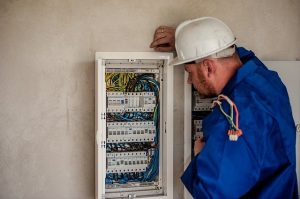The Impact of the 2024 Election on New Home Construction
The upcoming 2024 election in the United States is anticipated to have significant implications across various sectors, including the realm of new home construction. The political landscape and policy priorities of the winning party can play a crucial role in shaping the housing market and influencing the construction industry. As the nation stands on the cusp of this pivotal event, it is prudent to examine how the election might impact new home construction.
Regulatory Environment and Zoning Policies
One of the most direct ways the election can affect new home construction is through changes in the regulatory environment and zoning policies. Different political parties often have divergent approaches to land use regulations and zoning restrictions. The outcome of the election could determine whether there are efforts to streamline the permitting process, relax zoning laws, or promote more sustainable building practices.
For instance, if the elected party prioritizes economic growth and reducing bureaucratic hurdles, they might seek to expedite the approval process for construction projects. This could lead to a boost in new home construction, as developers encounter fewer barriers to starting and completing projects. On the other hand, a party with a stronger focus on environmental conservation might implement stricter zoning policies to protect green spaces, potentially limiting the available land for new housing development.
Infrastructure Investments and Housing Demand
The 2024 election could also shape new home construction indirectly through infrastructure investment policies. A party that emphasizes infrastructure development might allocate funds towards improving transportation networks, such as roads, bridges, and public transit. These investments can influence where new housing developments are viable and attract potential buyers.
Improved transportation options could expand the housing market beyond urban cores, encouraging suburban or exurban development. This shift might lead to increased demand for new homes in areas that were previously considered less desirable due to commuting challenges. Consequently, construction companies might redirect their focus to these newly accessible regions to meet the evolving demand.
Affordable Housing Initiatives
Affordable housing has been a persistent issue in the United States, and the 2024 election could impact efforts to address this challenge. Different parties might approach this issue with varying strategies, such as direct funding for affordable housing projects, tax incentives for developers to include affordable units, or regulatory measures to ensure housing affordability.
Should the winning party prioritize affordable housing initiatives, this could stimulate a surge in construction loan projects that cater to lower-income families and individuals. New home construction could include a higher proportion of affordable units, contributing to a more balanced housing market. Conversely, a party that emphasizes market-driven approaches might focus on reducing regulations and costs that could inhibit new construction overall.
Energy Efficiency and Sustainability
Environmental concerns and the push for energy efficiency have become increasingly prominent in recent years. The 2024 election’s outcome could influence the adoption of sustainable building practices in new home construction. A party committed to combating climate change may incentivize the use of renewable energy sources, energy-efficient appliances, and green building materials in new construction.
Such policies could influence construction trends by encouraging developers to prioritize environmentally friendly features in their projects. The incorporation of energy-efficient technologies and sustainable designs might become a standard practice, altering the way new homes are designed and constructed.
Labor and Immigration Policies
The availability of skilled labor is a critical factor in the construction industry. The outcome of the 2024 election could influence labor and immigration policies that impact the workforce, which in turn could affect the pace and cost of new home construction.
If labor policies become more stringent or if immigration regulations change, there might be challenges in sourcing skilled workers, potentially leading to delays and increased labor costs for construction projects. Conversely, a party that supports flexible labor practices or immigration reform might ensure a steady supply of skilled labor, promoting a more efficient and cost-effective construction process.
In conclusion, the 2024 election in the United States holds the potential to significantly impact new home construction. The regulatory environment, infrastructure Investments, affordable housing initiatives, energy efficiency policies, and labor considerations are all areas that could see changes depending on the winning party’s priorities. As voters and stakeholders await the election’s outcome, the construction industry remains poised to adapt to the shifts in policy and demand that may arise. Developers, builders, and industry professionals will need to stay vigilant and responsive to the evolving landscape as they navigate the post-election environment and work to meet the housing needs of a changing society.





